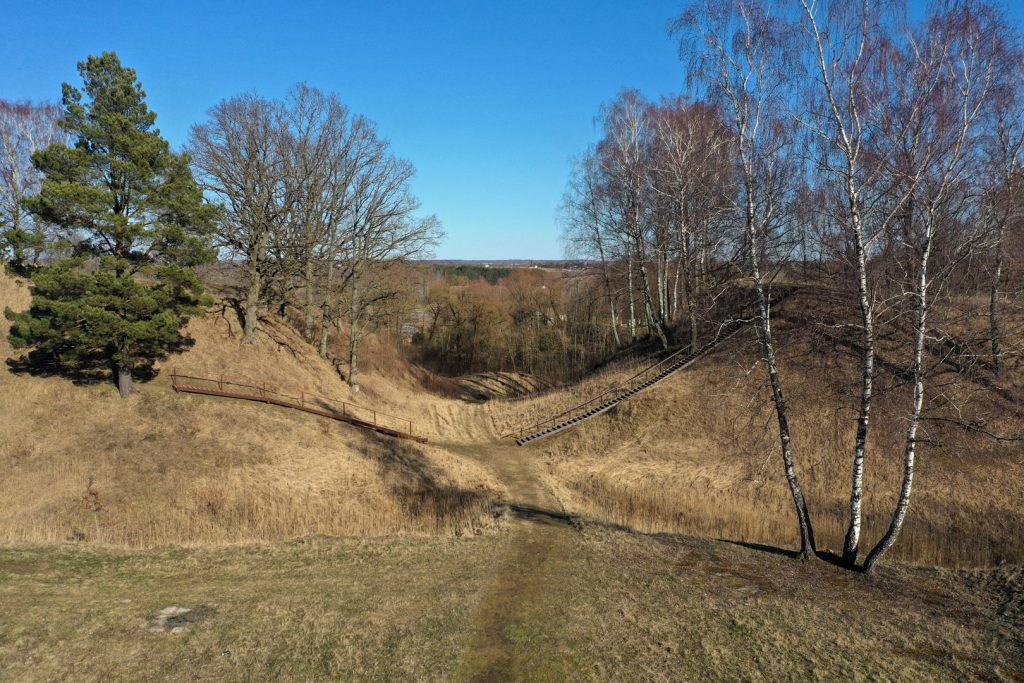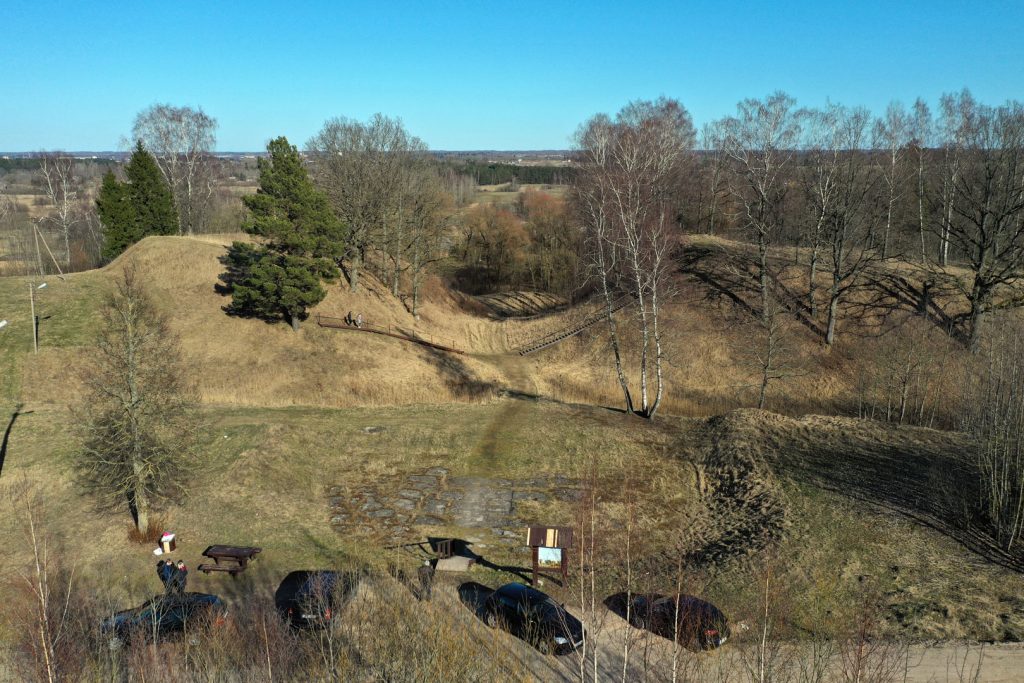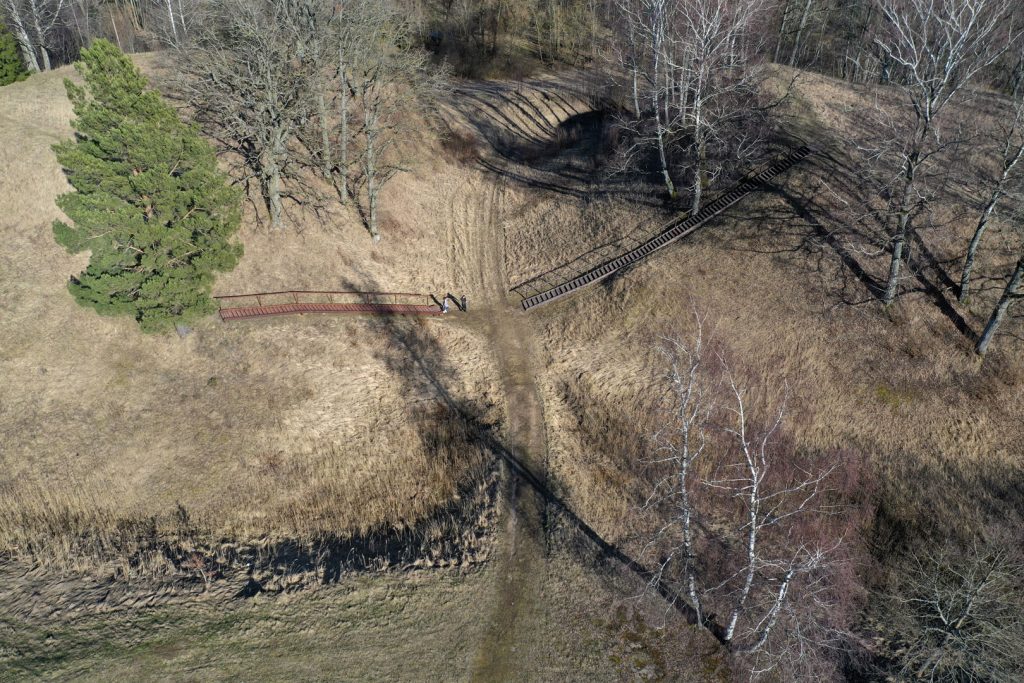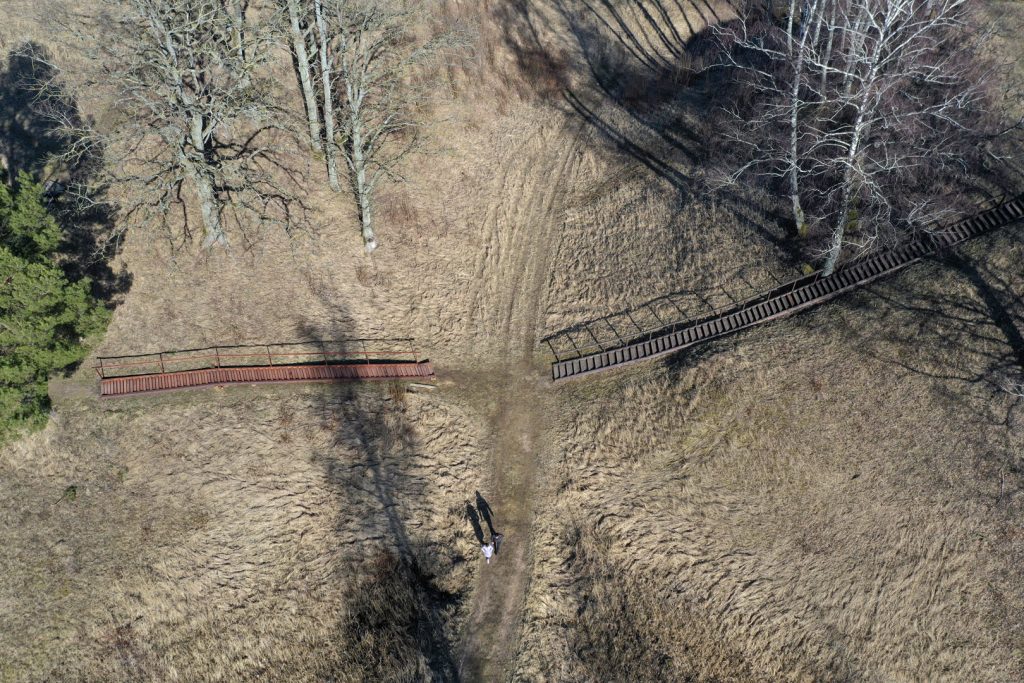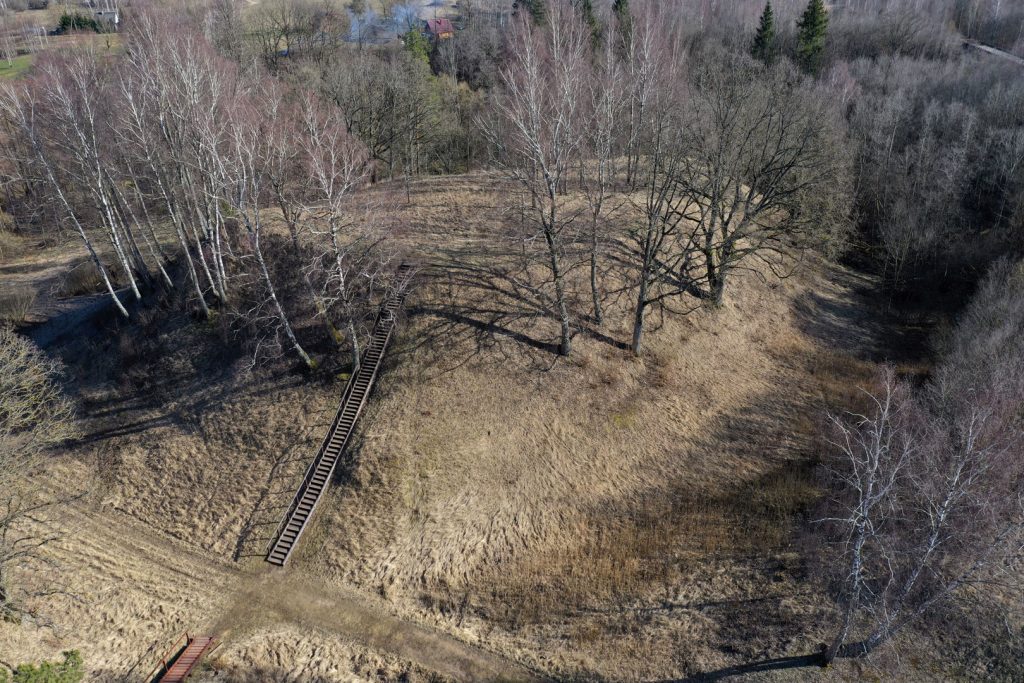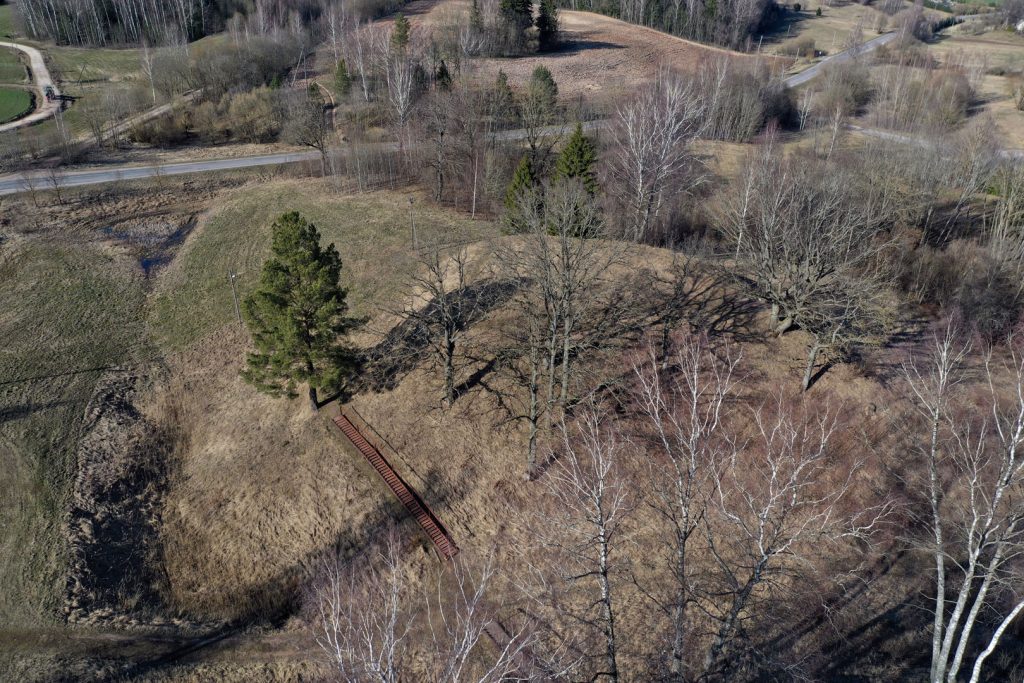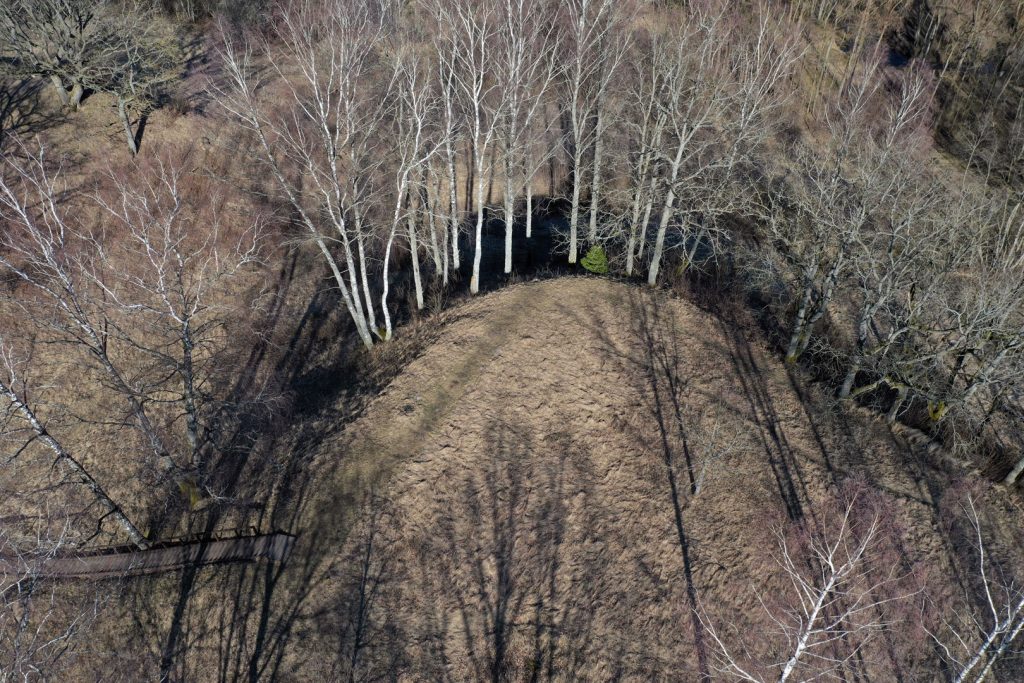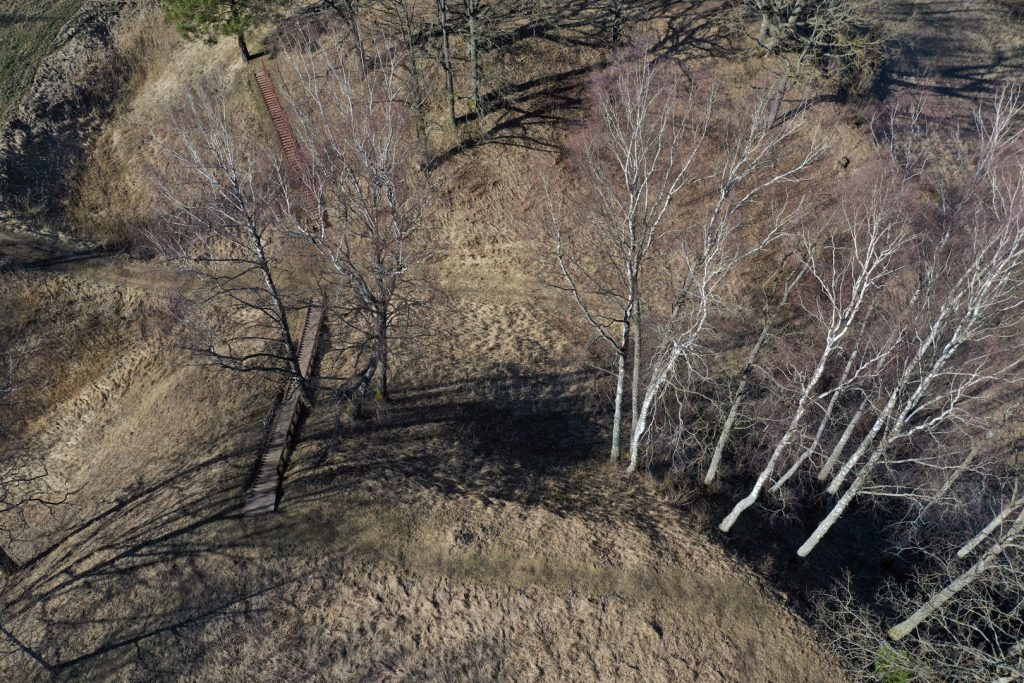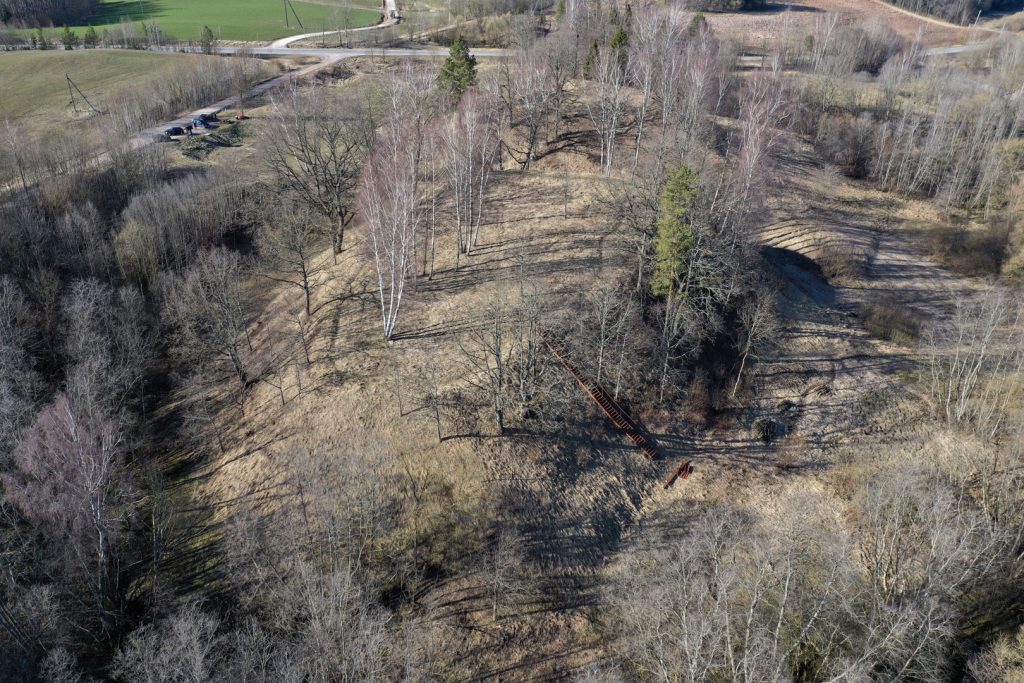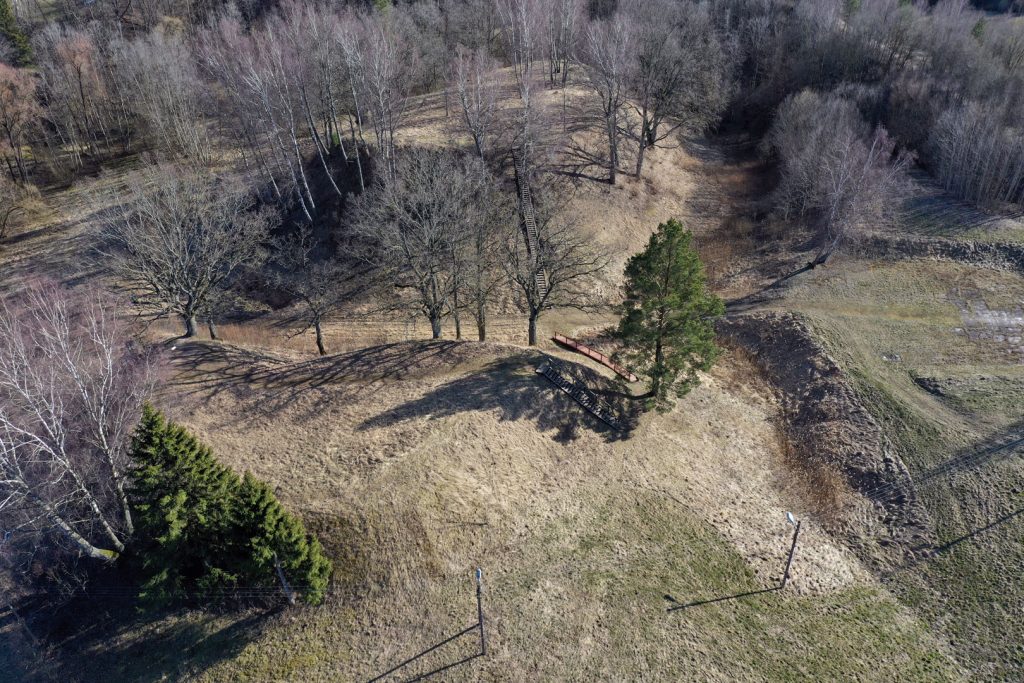Narkūnai hillfort
Narkūnai hillfort with foreworks and settlement (Utenis Castle, The Great hillfort) – the hillfort, foreworks and settlement are in the territory of Utena district municipality, north of Narkūnai, Leliūnai neighborhood. Accessible by the highway Utena–Pakalniai–Alanta, going up the height on the left bank of Utenėlė, 100m to the left in the south-east of the junction with the former railway Panevėžys–Pastovis.
The hillfort
The hillfort was built on a separate hill, on the left bank of the river Utenėlė. The site 55m long, 35m wide. Here is a rampart, 1.7m high, 15m wide, behind which there is a ditch, 60m long, 55m wide, 14m deep with a 9m wide bottom. The slopes are steep, 14m high.
The hillfort is severely damaged by ploughing, the site lies waste, the slopes are overgrown with thinned out trees. On the north-western slope there are stairs.
The foreworks (Utenis Grave, The Little hillfort) were built north of the hillfort, behind the ditch. The site 15m long, 25m wide. On the western, northern and eastern sides there is a rampart, 60m long, 2.5m high, 14m wide with an external slope of 4m in height (destroyed).
At the western foot of the hillfort, in the area of 1ha there was a foot settlement. There were found: postholes, hearths, an iron pin, a chisel, a bradawl, a brass earring, a clay spindle, a Djakov-type weight, fragments of brushed, smooth thrown pottery, some iron slag.
750m to the south-east there is Narkūnai burial ground dating back to the end of the XIVc. – beginning of the XVc. South-west of the hillfort there was a well, considered to be sacred (destroyed).
In 1835 during excavations, in the site of the hillfort a thick cultural layer was discovered with burnt pieces of clay, fragments of pottery, animal bones and other findings.
In 1959 in the foot settlement of the hillfort, west of the hillfort, Utena local history museum researched the area of 91m². A cultural layer of up to 25cm thick was found with molded brushed and thrown pottery.
After researching the western side of the site, 660m² in total, a cultural layer of 3.3m thick was found where 3 stages of dwelling in the hillfort were distinguished. The earliest fortifications of the hillfort were two rows of wooden posts 8-18cm in thickness. The distance between the rows was 40-45cm, and between the posts 6-12cm. The fence was braided from branches, had burnt several times and repeatedly repaired. On its internal side the edges of the site were reinforced with clay and a stone paving of 0.8m in width. This layer dates back to the I millennium BC. On the edges of the site there stood 6-8m long quadrangular buildings of columnar construction with round hearths.
At the beginning of the I millennium wooden fence fortifications were replaced by a 1m high rampart made of pressed clay on the edges of the site. In the XIVc. the present rampart was made from clay with stones and logs, on which a wooden columnar defensive fence was made, revetted with clay.
During research more than 800 finds were discovered: iron arrows for a crossbow and a bow, a broad-bladed axe, pins, bradawls, knife-cutters, knives, parts of scythes and spurs, cylindrical locks, splints, buckles, brass pins, bracelets, pendants, woven bracelet, a copper Roman coin from the II c., and a Jogailan silver coin from the end of the XIVc., a round brooch, stone axes (45 pieces), butt stocks, spindles, whetstones, grinding millstones, bone spearheads (35 pieces), arrowheads (40 pieces), daggers, awls, harpoons, pins, darning-needles, needles, gouges, scrapers, scrubbers, knives, cutters, whistles, axes from horn, clay casts for making brass axes and bracelets, crucibles, spindles, about 10 thousand fragments of brushed, smooth, polished and thrown pottery, over 7 thousand pieces of animal bones.
Under the rampart there was found a cultural layer of a settlement of the beginning of the first millennium with an iron pin, a part of a stone axe, brushed pottery. The rampart was made in the XIVc. from clay in one go.
In the western part of the foot settlement an area of 575m² was researched and there a damaged cultural layer of two periods was found. In the layer of the first centuries BC were found things from clay (weights, a spindle), things from iron (a pin, a chisel, a bradawl), molded brushed pottery, remains of buildings and hearths. In the upper cultural layer were found things from brass (earrings), from glass (beads), thrown pottery, some iron slag.
The finds are kept in Utena local history museum. The hillfort dates back to the I millennium BC – IIc. and the XIVc. – the beginning of the XVc.
In the hillfort there stood Utena castle. In February,1373 and in 1375 its environs were devastated by the Livonian Order that burnt the castle in the beginning of February, 1433.
The area of the monument territory 4.8ha.
Legends about Narkūnai hillfort
1. There is a hillfort not far from Narkūnai village. In the past there was a deep pit on the top of the hillfort. Once children while playing dropped one boy’s hat into that pit. The boy climbed down for the hat and found it full of golden money. Later another boy was lowered into the pit on purpose, but it was impossible to pull him out. The boy’s sorrowful mother was walking around and weeping: “Though you took his soul, let me have his body.”
2. There where there is Narkūnai hillfort, many hundreds years ago used to be a big city whose inhabitants sinned for the gods. Angry gods decided to punish them: they sank the city under the ground, and the churches of the city were turned into mountains as sacred places, from which at twelve o’clock sharp one can hear ringing bells. 3. People who lived near Narkūnai hillfort told that there is a treasure buried on the mountain. Not one inhabitant has seen the money burning in a bluish fire on the hillfort, but as soon as they approached nearer, the fire went out at once and a tremendous rumble could be heard in the mountain.
